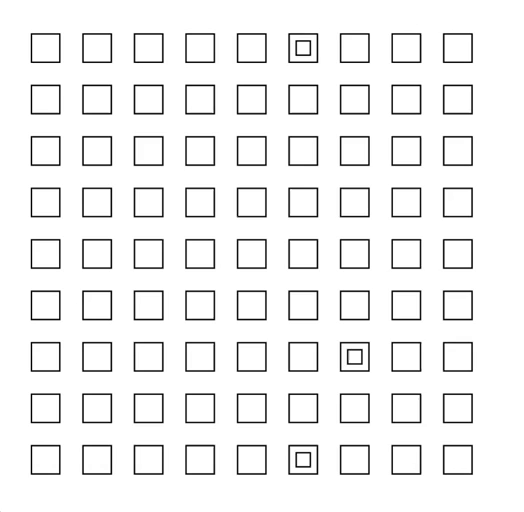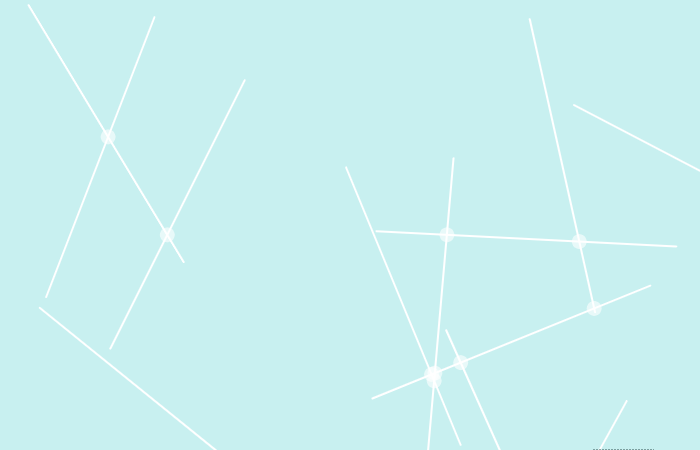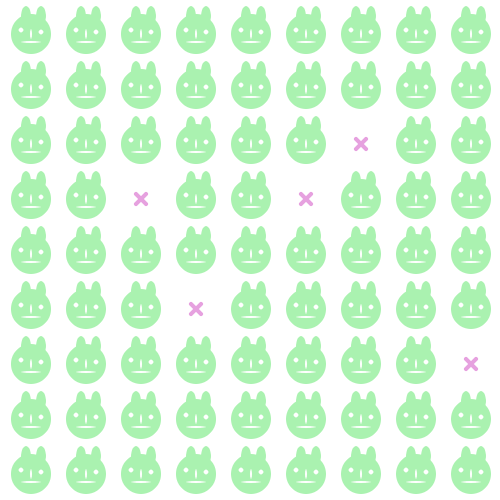var refresh;
var rows = 9;
var cols = 9;
var spacing = 55;
var xColor;
var dudeColor;
function setup() {
createCanvas(550, 550);
refresh = true;
colorMode(HSB, 100);
}
function draw() {
if (refresh) {
background(0, 0, 100);
var myHue = Math.random() * 100;
dudeColor = color(myHue, 30, 95);
xColor = color((myHue + 50) % 100, 40, 95);
fill(dudeColor);
stroke(100, 100, 30);
for(var i = 1; i <=rows; i++)
for(var j = 1; j <= cols; j++){
if(Math.random() > .1)
drawDude(i, j);
else
drawX(i, j);
}
refresh = false;
}
}
function drawDude(x, y){
stroke(0, 0, 100);
strokeWeight(0);
ellipse(x * spacing, y * spacing, 40, 40);
ellipse(x * spacing - 4, y * spacing - 20, 10, 20);
ellipse(x * spacing + 9, y * spacing - 18, 10, 20);
strokeWeight(3);
ellipse(x * spacing - 10, y * spacing - 4, 2, 2);
ellipse(x * spacing + 10, y * spacing - 2, 2, 2);
strokeWeight(2);
ellipse(x * spacing, y * spacing + 1, 1, 6);
ellipse(x * spacing, y * spacing + 8, 15, 1);
}
function drawX(x, y){
stroke(xColor);
strokeWeight(4);
line(x * spacing + 5, y * spacing + 5, x * spacing - 5, y * spacing - 5);
line(x * spacing - 5, y * spacing + 5, x * spacing + 5, y * spacing - 5);
}
function mousePressed() {
refresh = true;
} |





